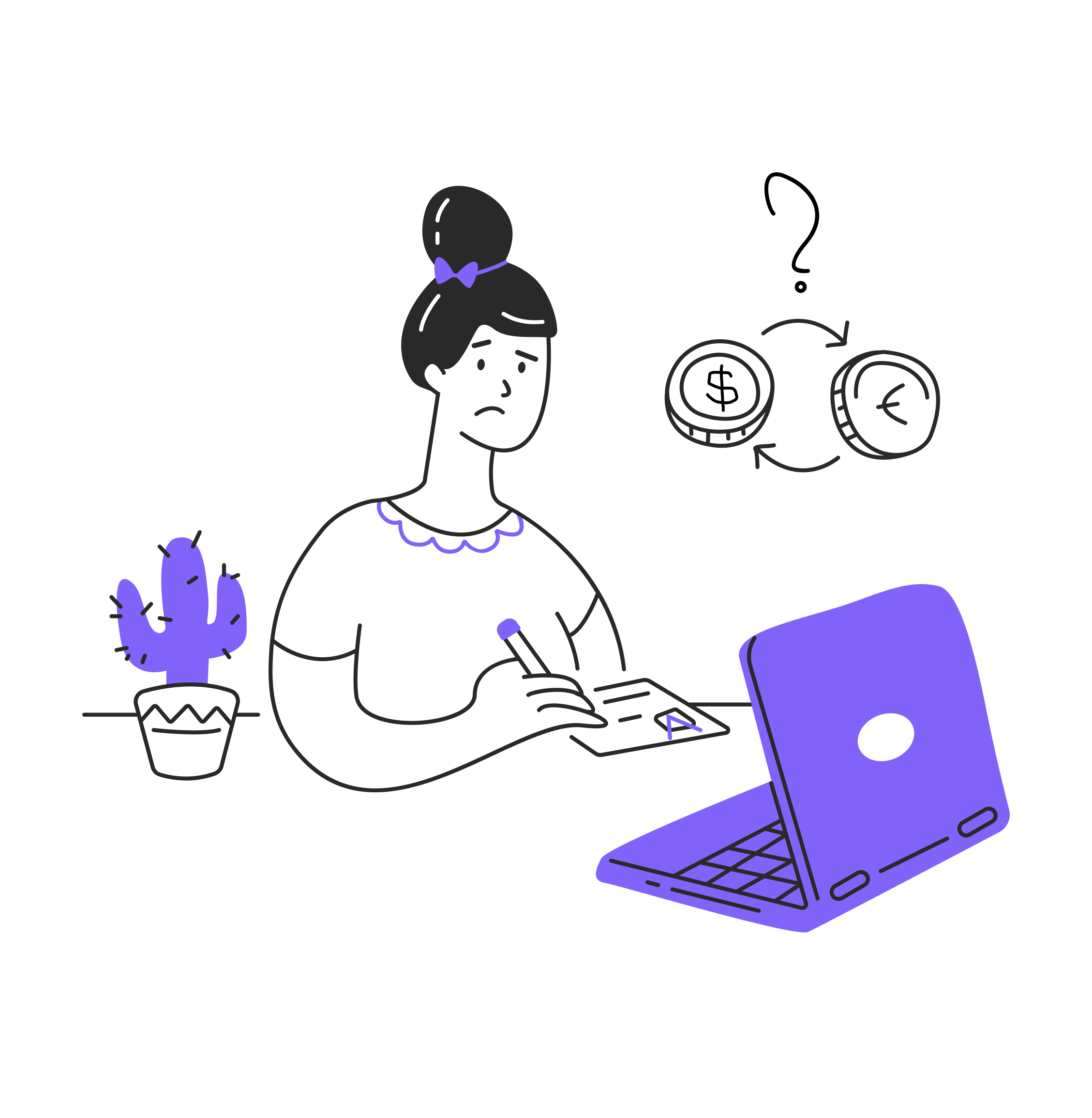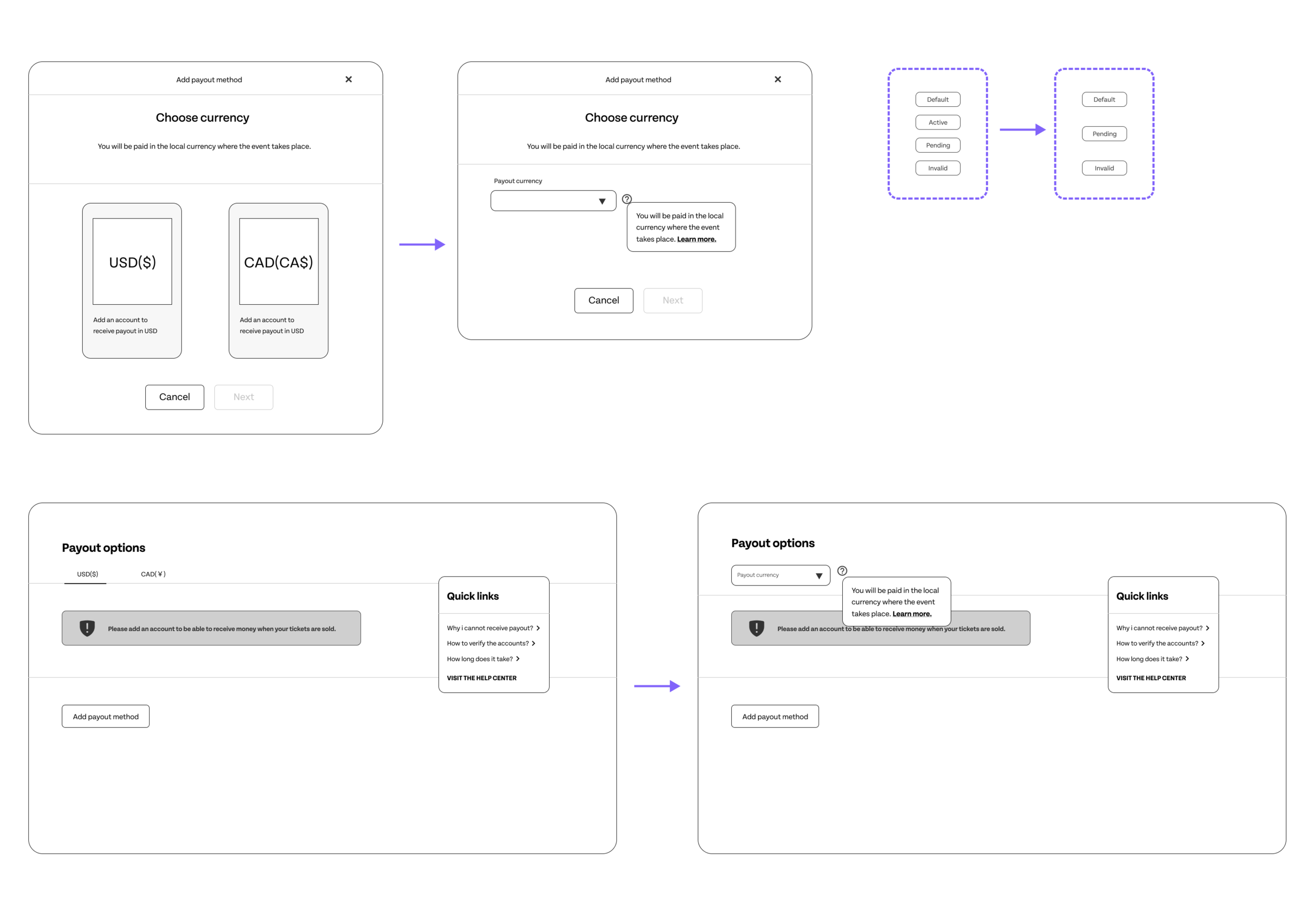STUBHUB INTERNSHIP
Summer 2021
overview
―
StubHub is an online ticket exchange company where people buy and sell tickets for sports, concerts, and other live events. Some of the ongoing problems in StubHub’s seller experience are high amount of Customer Support calls and high payment failure rate. During my internship, I was given the task to dig down to the root of such problems and potentially, solve them.
project type
research, web design
role
ux design intern
duration
3 months
team
Xavier Lian | design manager
Sophia Tang | senior designer
Eric Dong | project manager

what was the problem we were trying to solve?
―
“How might we help the sellers receive payout in a fast, easy, and reliable way?”
what were my responsibilities?
―
Conduct desktop research, including heuristic evaluations and competitive analysis, on StubHub’s current seller payout experience.
Synthesize research findings into high-level insights and identify design opportunities with cross-functional partners.
Prototype and test new design features to improve seller payout experience.
timeline
―
(actual)timeline
―
research takeaways and design opportunities
―
The intransparent payout process causes user confusion
StubHub’s current design hides necessary information on proper payout account set-up Sellers have to learn from their failure. We want to increase transparency so that sellers are informed and able to complete the payout set-up easily.
Little communication on account troubleshooting
StubHub does not provide appropriate feedback on payout account status. It is very difficult for users to understand when and how to fix their accounts. We want to use effective communications and in-hand help to improve the trouble-shooting experience.
Inconsistency and misuse of design elements
Inconsistent UX writings and violations of design conventions create moments of frictions for sellers to smoothly set up and manage their payout accounts. We aim to redesign current design components for an overall frictionless seller experience.
problems on the surface
―
The story begins with a meeting between the design team and a product manager. In the meeting, he mentioned some ongoing problems in StubHub’s seller experiences. Those problems were very general, like high amounts of Customer Support calls and payout failure.
High Amount of CS Calls
1. Users do not know which payout type to choose
2. Users do not know how to set up their accounts properly
3. Users have issues managing their payout account
High Payout Account Failure Rate
1. Users enter wrong ACH or PayPal account information
2. Payout accounts cannot receive the payout currency
a little more about StubHub
―
Before diving into research, I learned several concepts specific to StubHub that have shaped their current design decisions.
Fast-listing Is Priority
As a resale platform, StubHub’s primary focus is to help sellers list tickets easily and quickly. Account verifications are therefore postponed for high listing success rate.
Event Currency Only
StubHub does not allow users to receive money in the currency they prefer. Instead, users could only receive payout in the local currency where the events take place.
research methods
―
To dig down to the root of these problems and potentially solve them, I started doing research to learn the current user flow.
Competitive analysis [mapping]
Competitive analysis [sample screenshot flow analysis]
what is the current seller journey?
―
The research allowed me to understand what sellers’ current experience is like to receive a failed payout. I mapped the pain points onto the journey map to build connections between different stages of interactions and identify the root problems.
Problem Statement
―
How might we help the sellers receive payout in a fast, easy, and reliable way?
Fast
The new design should prioritize fast-listing and streamline seller experience.
Easy
Payout account setup and management should be easy to understand and perform.
Reliable
Account verifications should be properly performed and noticed. If errors occur, users should be able to do trouble-shooting easily.
ideation
―
To improve the seller payout experience, I brainstormed potential improvements on some of the existing features. I sketched my ideas and received feedback from designers, engineers, and product managers.
scoping down based on feedback
―
After showing my ideations with the team, I scoped down the project based on current business focus and available resources. The new task will be to redesign the Settings page, which is the key after-sale touchpoint for payout account set-up and management.
low-fi design iterations
―
1st round feedbacks
―
2nd low-fi design iterations
―
Based on the feedback I received from my team and users, I iterated my design. For the 2nd low-fi design, I focused on making the design more scalable, improving the UX writing, and changing the indicator design options.
high-fi design iterations
―
next step
―
Need A/B testings to prove how the new payout design works for upstream and downstream. Some sample data that we could look at:
Test account failure rate
Test contact rate decreases
Ease-of-use rating for payout account management
Test listing completion rate
Collaborate with cross-functional teams to create metrics to track and monitor seller behaviors
So far the design decisions are iterated based on heuristic evaluations and internal feedbacks, such as technical difficulty and business strategies, rather than seller behavior metrics.
💜 my takeaways
―
Embracing the uncertainty
Throughout my internship, I was constantly faced with ambiguity and was expected to rescope my project based on my team's needs. Because there were so many moving parts, I had to adapt to changes quickly, learn to be comfortable with not knowing, and keep an open mind while setting realistic expectations and priorities to push my project forward.
Getting and giving feedback
One of the most valuable lessons I learned this summer was that getting diverse perspectives on my designs is crucial to revealing blind spots and unlocking possibilities. I participated in weekly design team crits, smaller group feedback sessions, and 1-1's with cross-functional partners to receive and give feedback. As much as I valued getting feedback, everyone on the team was eager to hear my opinions and I tried to provide thoughtful feedback and think about what direction I can push the team towards.
Sometimes when my cross-functional partners provided conflicting feedback it was challenging to find a balance and bring my designs to an agreement, but I learned to understand and empathize with their positions. A product manager might advocate for designs that align more closely with the product roadmap while an engineer might prefer designs that can be implemented effectively. Understanding different internal goals and trying to bridge the gap was a fun challenge.
final thoughts
―
Embracing the uncertainty
My summer at StubHub reaffirmed my passion for design. I realized how extremely lucky I was to be able to do something I love as my job and to learn from amazing mentors who exemplified the kind of designer and teammate I want to be.
My amazing team 🎖 - we had a good meal that day by the way
My side project - design new hire swag! I enjoyed it a lot :)















